Theyyam
Theyyam are Hindu ritualistic dance forms practiced in northern Kerala and some parts of Karnataka(Tulunadu). Theyyam is also known as Kaliyattam or Thira or Bhootakola depending on the region where it is performed.
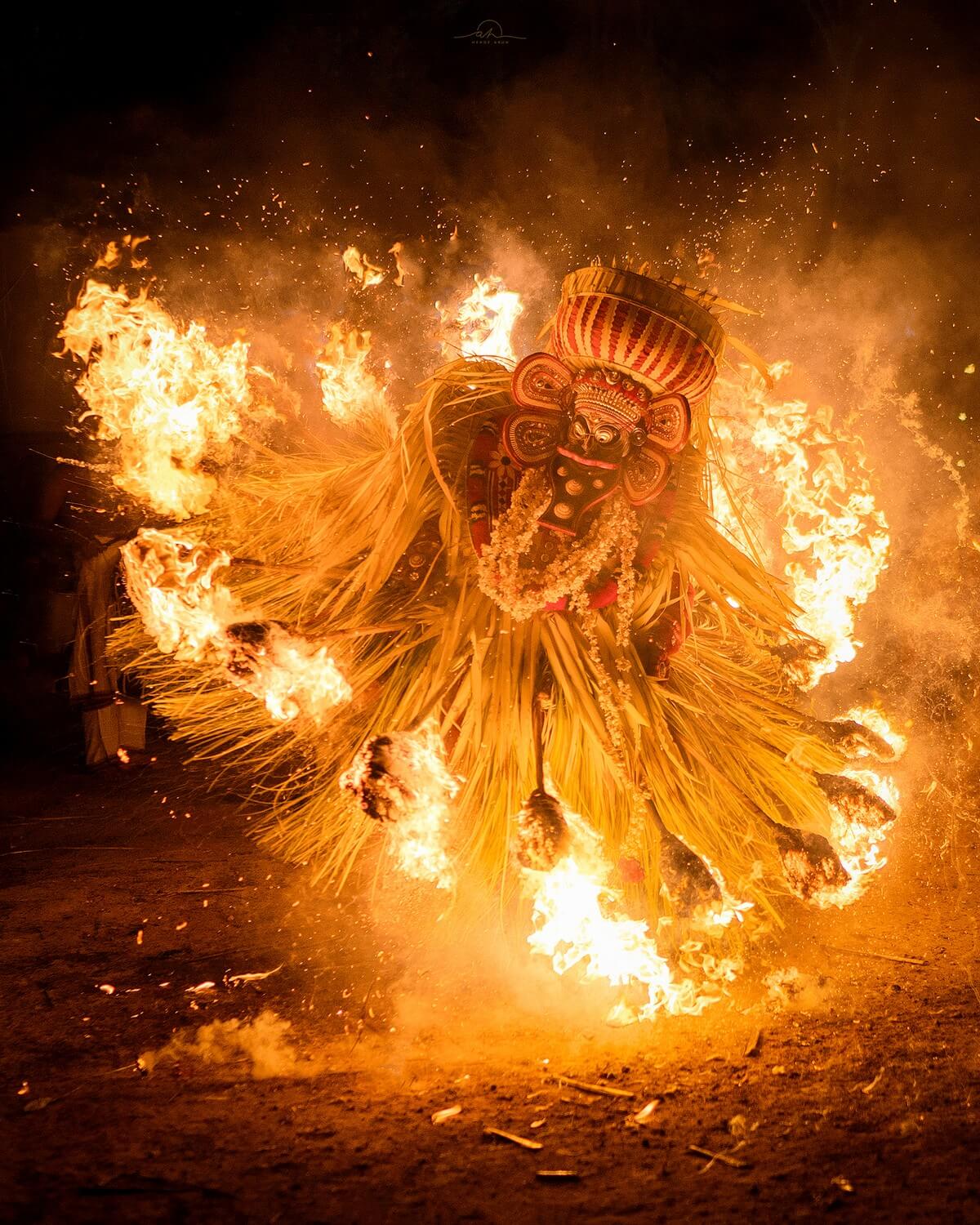
Since there are 400+ varieties of theyyam we cannot single down to one answer. But in general, there would be a performer/ group of performers who wear extensive make up, head gear, fire torches around their body, colorful attire usually a mix of red, yellow, black, and dance according to the rhythm of cymbals and drums.
Some of them jump through the fire, some twirl with fire torches, some dance extensively to attain the state of trance – where the human performer becomes the demi God- which usually is the deity of the village/ temple/house where the act is done.
The demi god blesses the devotees and cools down to get back into the human form again.
The whole act can go from a few minutes to hours as well. Some of them require sacrifices for the same, usually it’s a chicken until the blood is spilled.
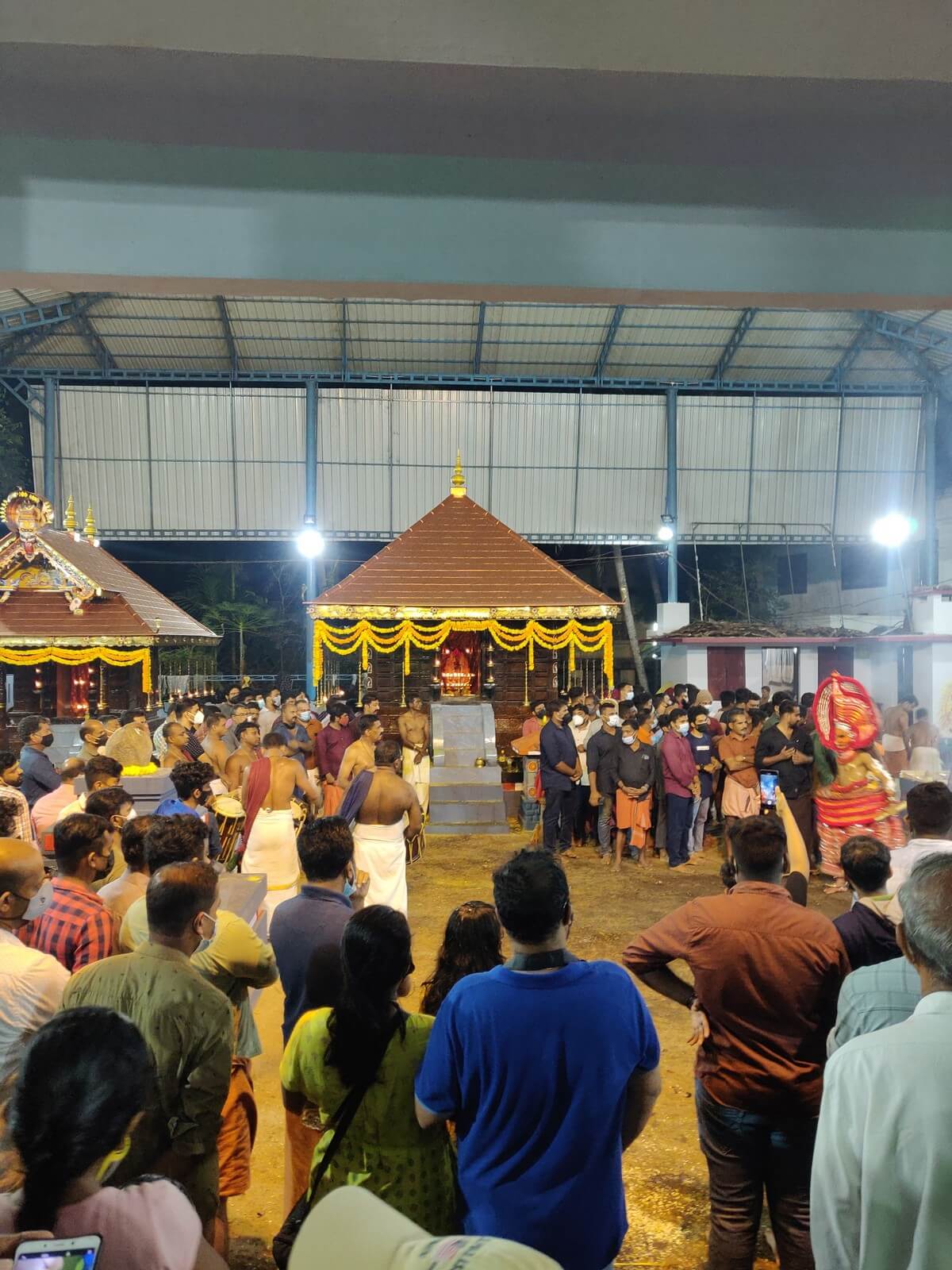
When does theyyam happen?
Theyyam happens usually all over the year, but the major season time starts from Nov peaks around Dec – Feb and ends around April- May.
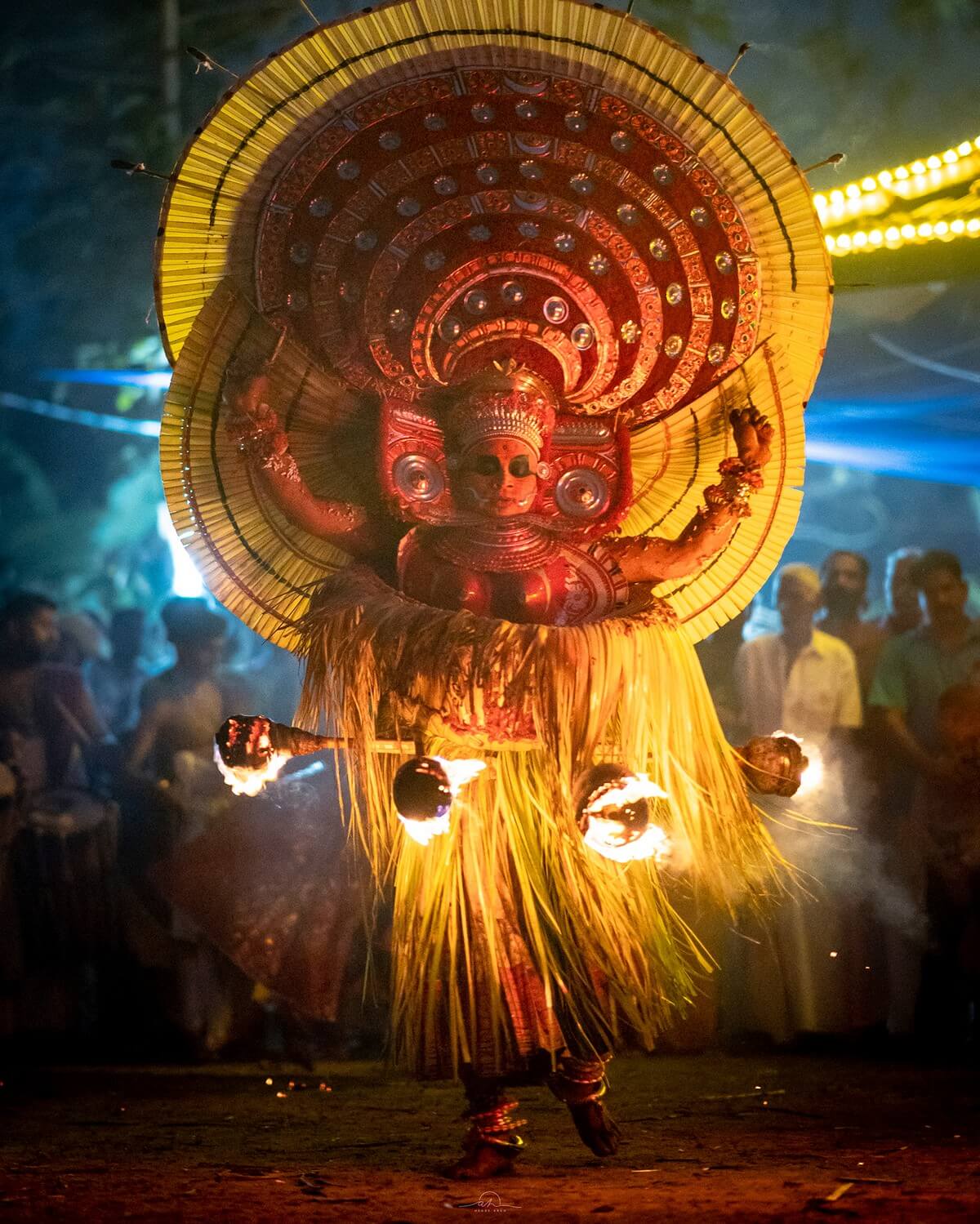
Theyyams happen usually in Calicut, Kannur, Kasargod, Mangalore and Udupi districts and nearby places of Kerala and Karnataka. There have been theyyam performances in other regions of Kerala and Karnataka as well, but not so common.
This is one of the trickiest things. I usually take local help, or follow pages on Instagram (theyyam of malabar live season highlights) to find the posters to get the details of location, timings and dates.
Android users can use the app called kaliyattakalam to find the posters. It would be a good choice to call the number given on the poster to find the details as well or connect with any local friend who can translate the same for you, as the text is written in Malayalam usually.
You can check the kerala tourism page to find the details as well.
Most places would not be found on google maps, but if you take local help, these places can be located easily.
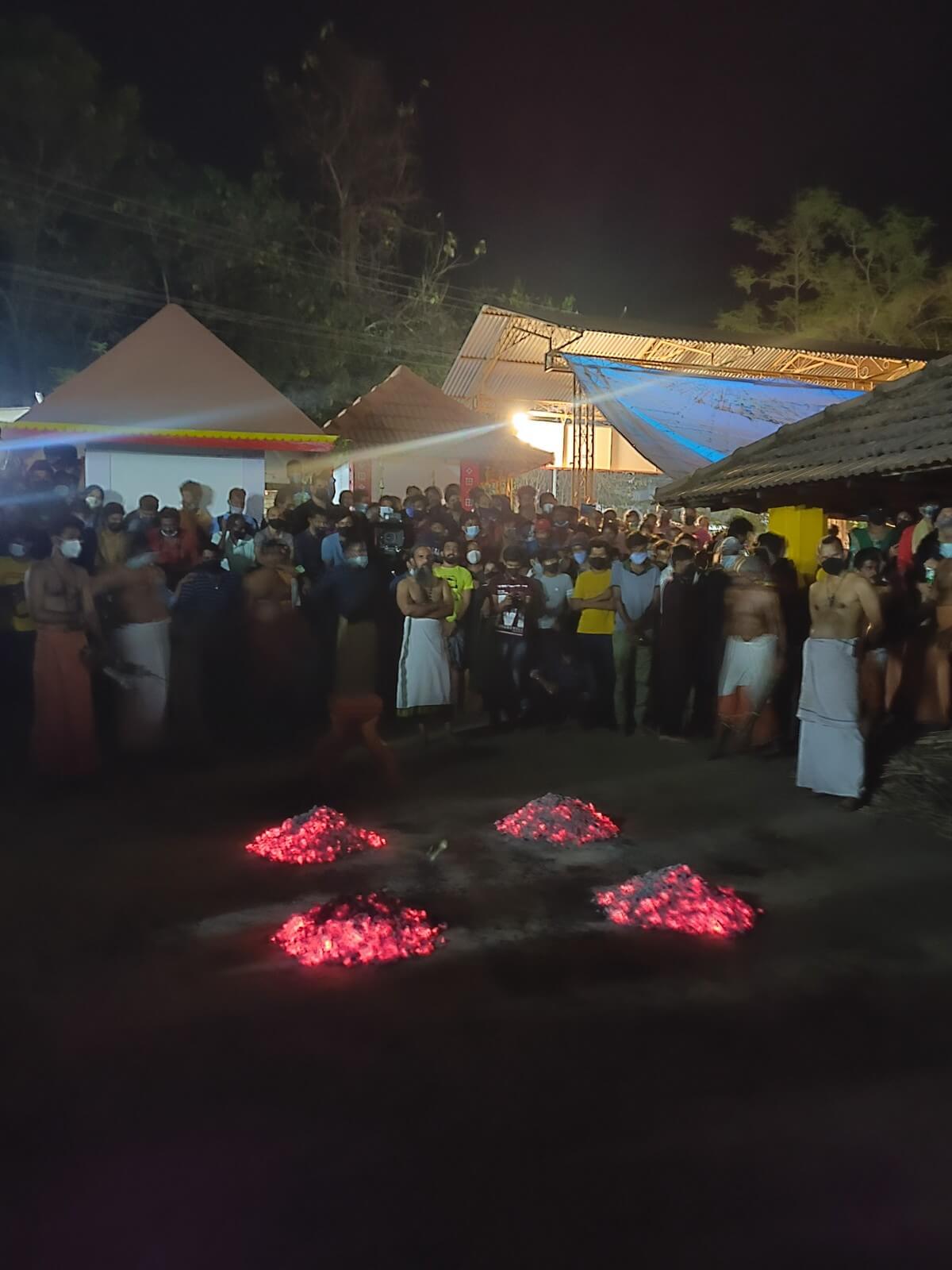
Why are the names of the theyyam different and what do they signify?
Some of the picturesque theyyams are Thee Kuttichathan, kandanar kelan, kathivanoor veeran, karim gulikan etc.
The names signify the unique deity they represent, and the make up, head gear, props (swords, fire, snake tattoos, etc) depending on the theyyam.
What are the rarest theyyams?
I do not have a definite answer for this. I can list some of my favorites below considering the less number of performances in a year.
Karim chamundi, thee kutti chathan, vedan, athiralan, thotungara bhagavathi, mookambika gulikan, kuttichathan, pulamaruthan, anthithira, pulli pothi, parava chamundi, aalottu bhagavathi, panayakkat bhagavathi, karim gulikan, njarambil bhagavathi, kandakarnan theyyam, raktheswari theyyam.
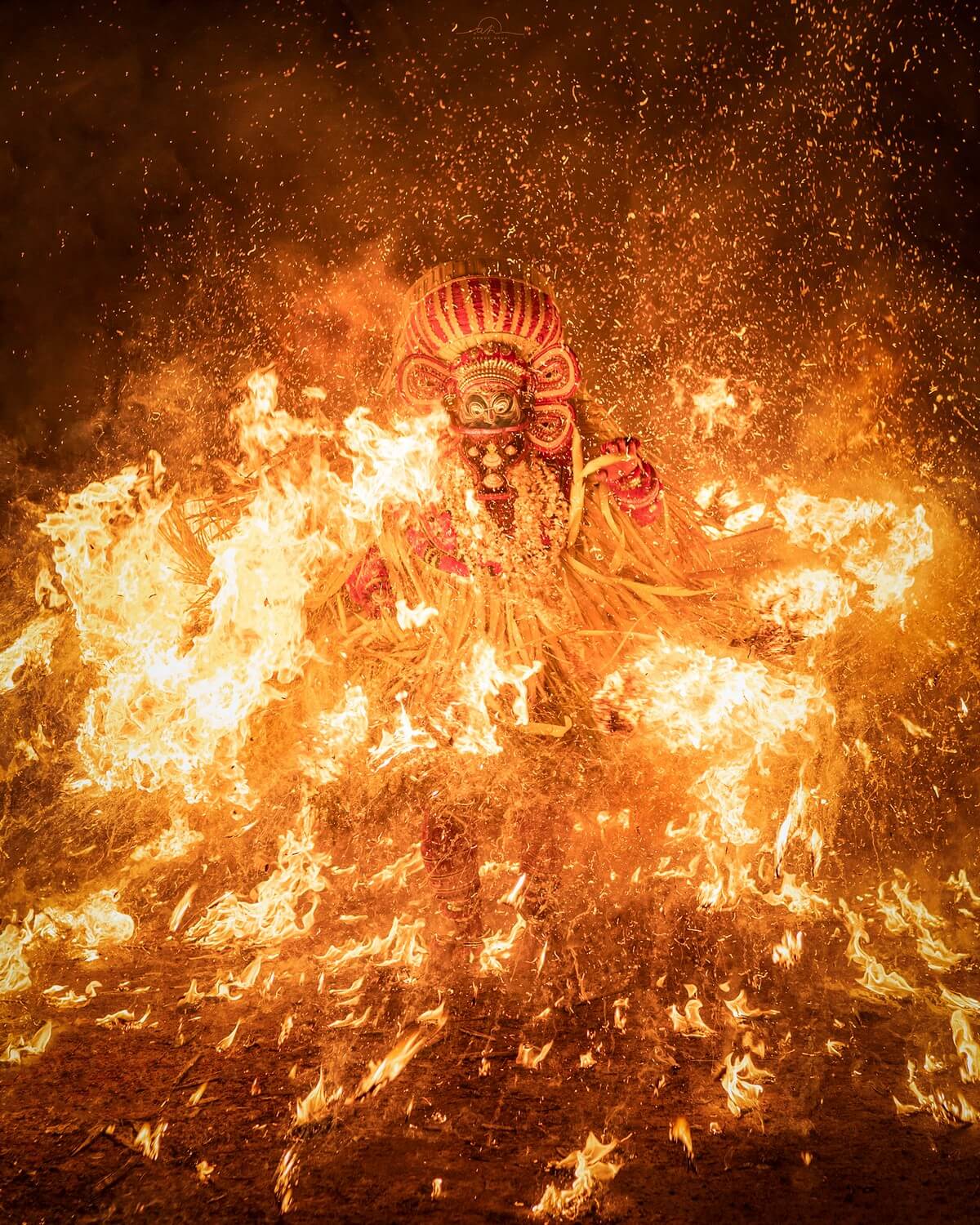
What are the do’s and don’ts if one is attending/ shooting a theyyam performance?
Jotting down a few from my experience.
- This is a performance with a lot of people deeply believing and highly spiritual. So happens in a sacred space. Wear attire accordingly, also it’s usually very hot in space, so it would be wiser to wear simple clothes not so bright and keep yourself hydrated.
- Respect the performers and maintain distance while photographing the same. Never poke your camera in front of the performers just to get a photograph.
- Use a prime lens preferably, like a 24 or 35 or 50mm if you are using a full frame with an aperture of F1.4 or F1.2 . I personally shot all my Theyyam photos with a 35mm F1.4 zeiss lens. You would require a min aperture of F2.8 in order to shoot, so if you are using zoom lenses ensure to get something like a 24-70mm 2.8. Swapping lenses may not be always feasible considering the crowd during the performance.
- The auto focus, dynamic range, low light performance of the camera is the most important while shooting a low light performance like theyyam.
- There is no single setting as such, to shoot theyyam. Shoot in RAW, burst mode preferably, use fast cards to avoid buffering, continuous autofocus, with back button autofocus. I ensure to keep a shutter speed of 1/200- 1/1000, aperture of F1.4 – F2.8, and ISO in the range of 100- 1600/3200 to get sharp photos avoiding the motion blur.
- Always underexpose, preferably not washing out the fire details while shooting, you can recover shadows upto 2-3 stops without much noise in post production.
- Respecting the locals, almost everyone I have come across has been really helpful, welcoming and accommodating with some providing food and water to me as well.
- These performances happen mostly during the night, so ensure to have some snacks and be ready to sacrifice your sleep.
- Also you don’t have to pay any money to anyone to attend these performances, you can donate to the trust, temple hundi and it’s upto you to make the choice.
- Ensure to stay away from sparkles of fire and do not step on them to avoid injuries.
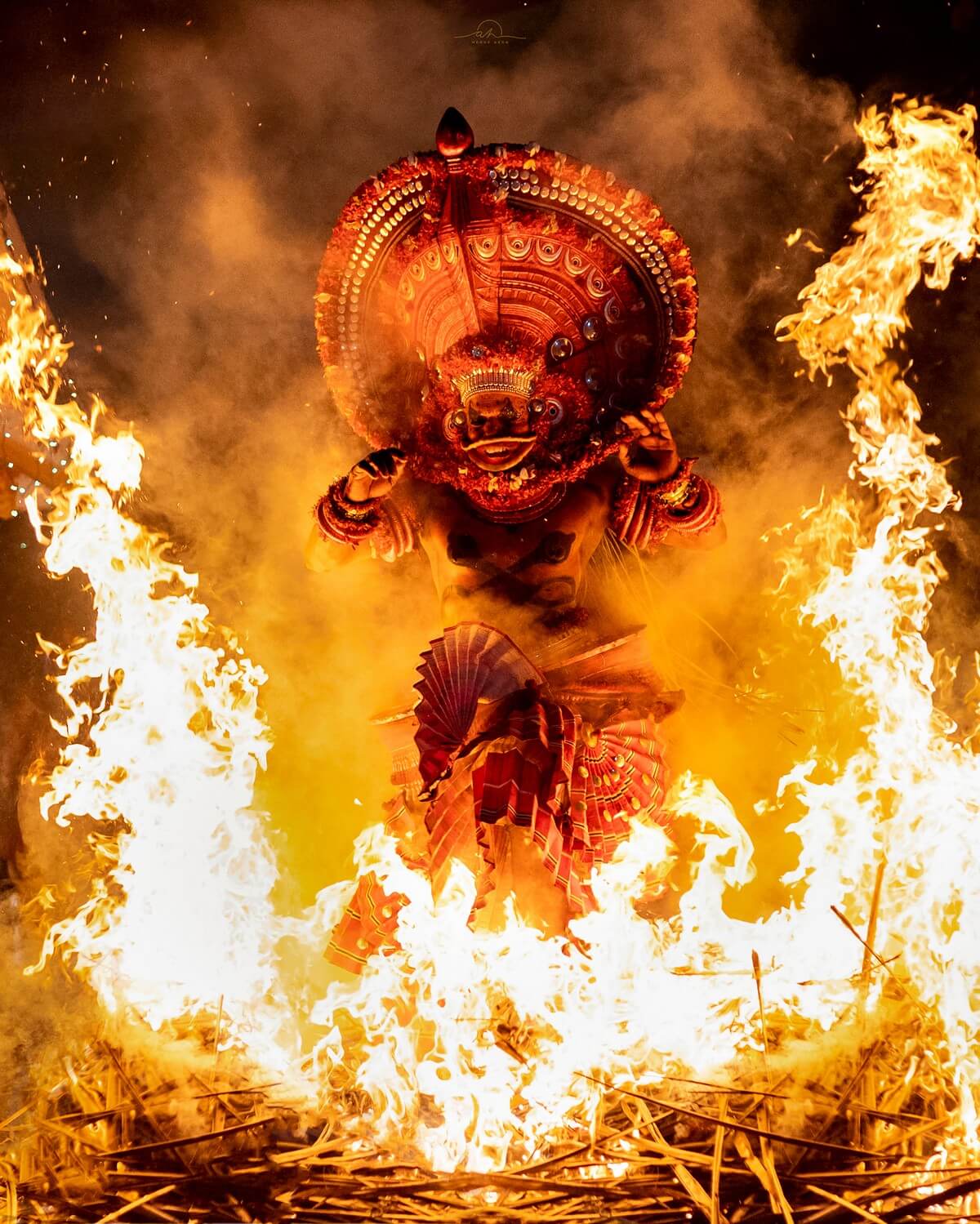
Workshops are coming soon. Stay tuned. Workshop details will be updated through social media and website.


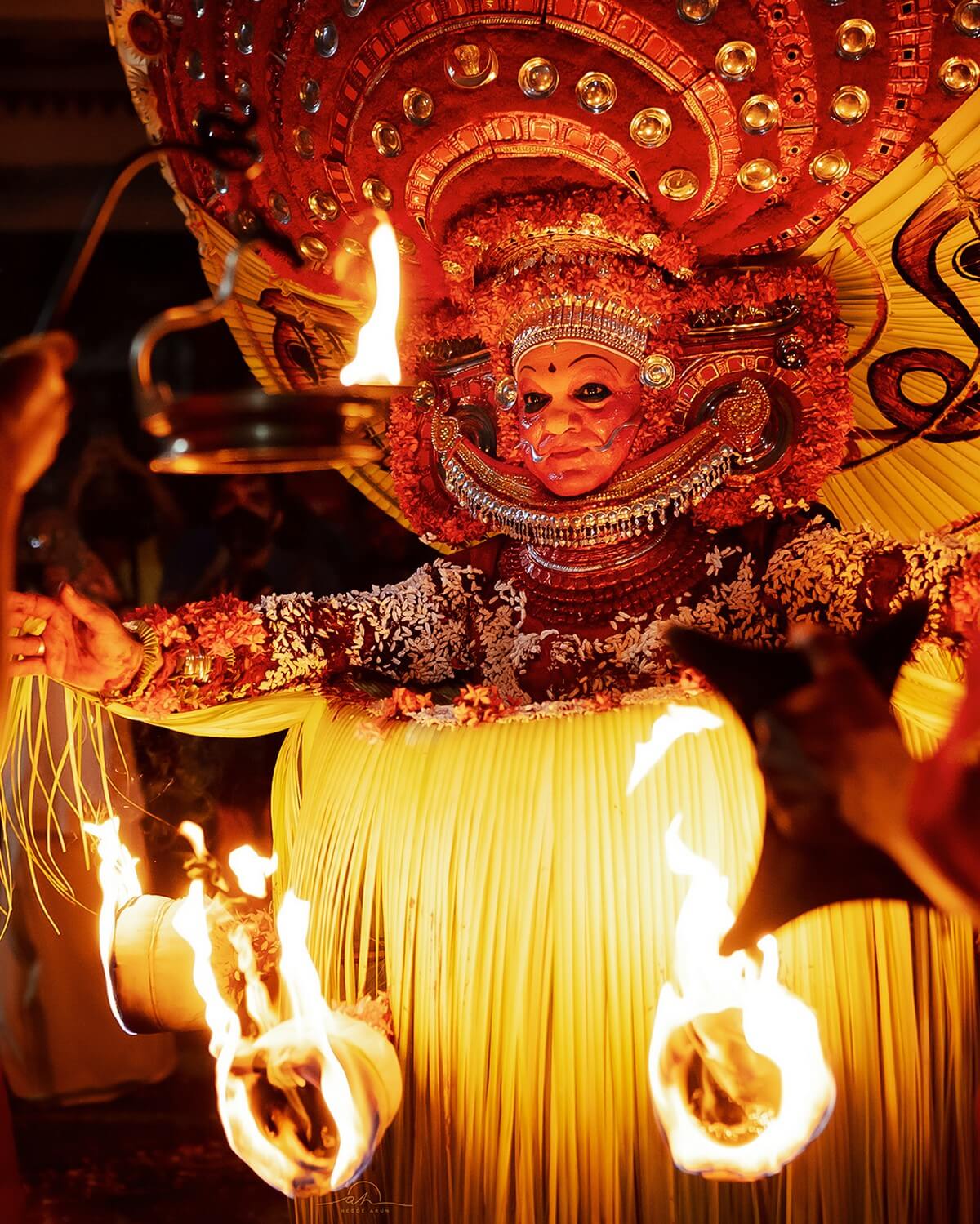
Comments
Joseph R
Arun Hegden